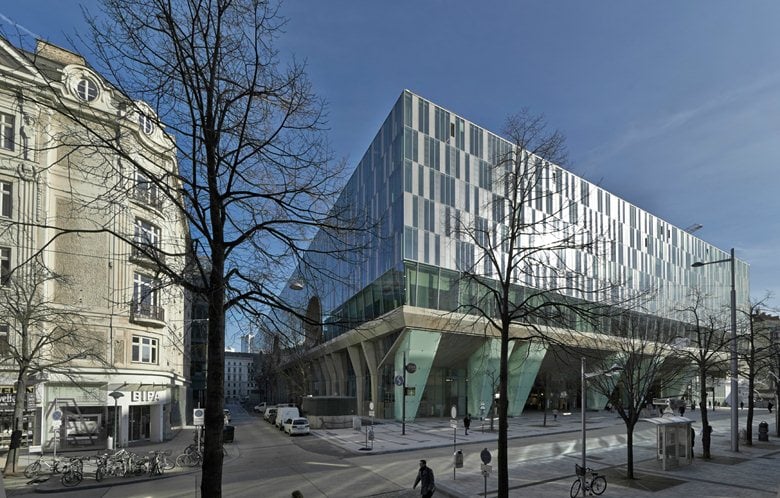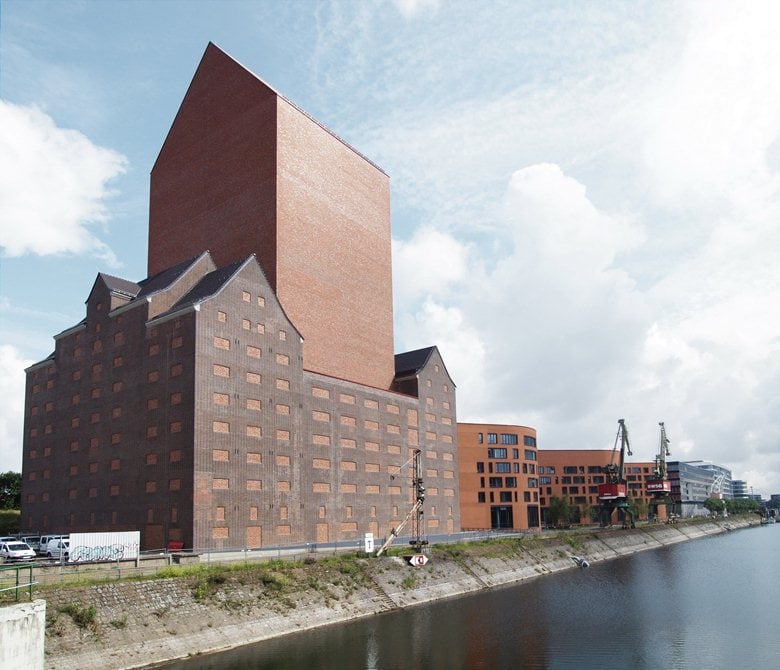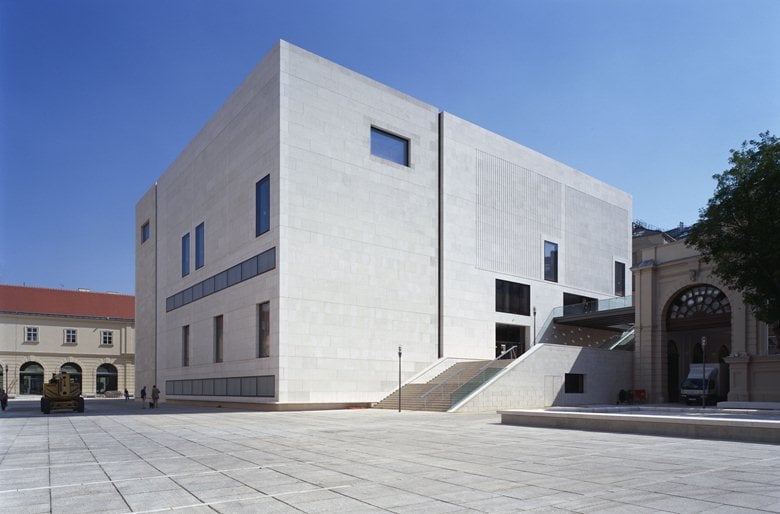Ortner & Ortner
Architecture Firm Berlin / Germany
 11
11
 10
10
Wien Mitte
Vienna / Austria / 2012
 9
9
Landesarchiv NRW
Duisburg / Germany / 2004
 4
4
Leopold Museum
Vienna / Austria / 2001
 3
3
MUMOK
Vienna / Austria / 1979
The history of Ortner & Ortner dates back to 1970. At that time Laurids Ortner, Manfred Ortner and Günther Zamp Kelp worked together in Düsseldorf as Haus-Rucker-Co. The projects they worked on over the following 15 years shifted programmatically between the areas of free art and architecture. Many of them anticipated later developments and had a sustained influence on tendencies and directions.
In the mid-1980s the interest moved increasingly to concrete building commissions. Loosened
from Haus-Rucker-Co, Ortner & Ortner worked from this time onwards as an architects practice and in 1990 were commissioned to build one of the world‘s largest cultural centres - the Vienna Museumsquartier - which led to international acceptance. Since then, the scope of duties has expanded continuously. Besides further significant cultural buildings, numerous commercial and office buildings have been built. This year the fourth shopping center, the Boulevard Berlin, has been completed.
The design of masterplans for long-term site-developments – another key competence of O&O Baukunst- can be followed at the completion of “Think K”, a new urban district in Stuttgart Killesberg.
Our offices use internal computer networks (2 Windows XP-Server, 1 Mac OSX-Server) inclu ding 28 CAD workstations fully installed with programmes like ArchiCAD, AutoCAD,. MS-Of fice, Photoshop,grafik und layoutprogammes.
Since its founding the office has increased, employing an average of 50 people at three loca tions in Europe: Vienna, Berlin and Cologne.
In 2011 Laurids and Manfred Ortner appointed five Junior Partners, holding responsibilities to achieve high architectural quality in planning and realizing their numerous projects. Furthermore the company´s name changed from Ortner & Ortner into O&O Baukunst.
We create an distinctive architectural added value for you.
In the mid-1980s the interest moved increasingly to concrete building commissions. Loosened
from Haus-Rucker-Co, Ortner & Ortner worked from this time onwards as an architects practice and in 1990 were commissioned to build one of the world‘s largest cultural centres - the Vienna Museumsquartier - which led to international acceptance. Since then, the scope of duties has expanded continuously. Besides further significant cultural buildings, numerous commercial and office buildings have been built. This year the fourth shopping center, the Boulevard Berlin, has been completed.
The design of masterplans for long-term site-developments – another key competence of O&O Baukunst- can be followed at the completion of “Think K”, a new urban district in Stuttgart Killesberg.
Our offices use internal computer networks (2 Windows XP-Server, 1 Mac OSX-Server) inclu ding 28 CAD workstations fully installed with programmes like ArchiCAD, AutoCAD,. MS-Of fice, Photoshop,grafik und layoutprogammes.
Since its founding the office has increased, employing an average of 50 people at three loca tions in Europe: Vienna, Berlin and Cologne.
In 2011 Laurids and Manfred Ortner appointed five Junior Partners, holding responsibilities to achieve high architectural quality in planning and realizing their numerous projects. Furthermore the company´s name changed from Ortner & Ortner into O&O Baukunst.
We create an distinctive architectural added value for you.

The history of Ortner & Ortner dates back to 1970. At that time Laurids Ortner, Manfred Ortner and Günther Zamp Kelp worked together in Düsseldorf as Haus-Rucker-Co. The projects they worked on over the following 15 years shifted programmatically between the areas of free art and architecture. Many of them anticipated later developments and had a sustained influence on tendencies and directions. In the mid-1980s the interest moved increasingly to concrete building commissions. Loosened from...

- Laurids Ortner
- Founder

- Manfred Ortner
- Founder

- Günther Zamp Kelp
- Founder
